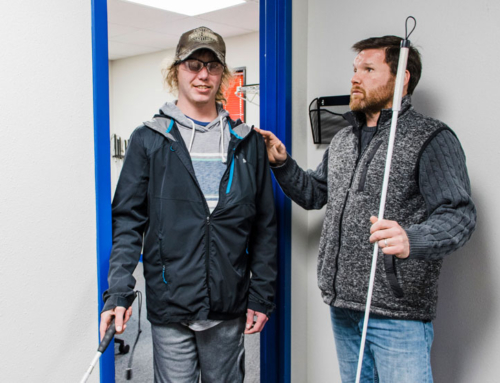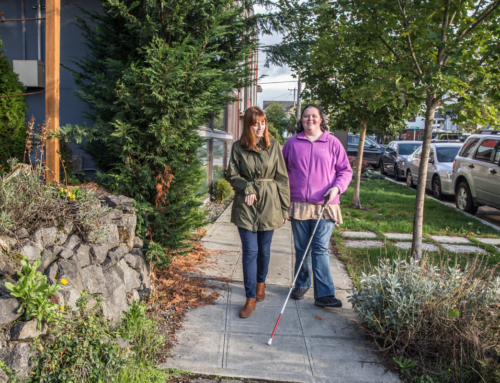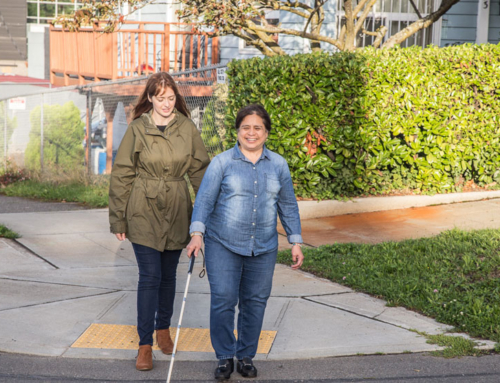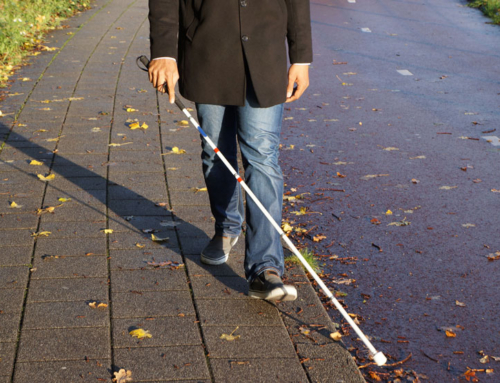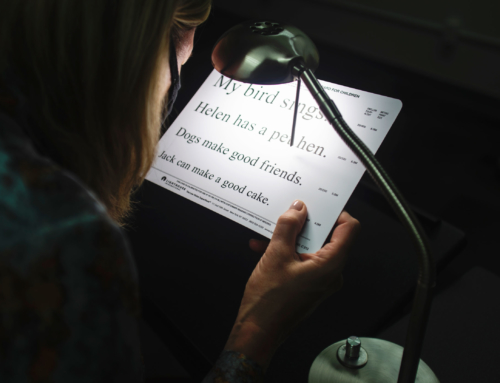 Orientation and Mobility Specialist David Miller (third from left) with KPG Architects experience vision simulation goggles and practice using white canes before their guided walk.
Orientation and Mobility Specialist David Miller (third from left) with KPG Architects experience vision simulation goggles and practice using white canes before their guided walk.
Throughout 2012, The Lighthouse for the Blind, Inc.’s Orientation and Mobility (O&M) Department has been busy assisting individuals who are blind in learning skills to travel safely and independently. In addition to providing Lighthouse employees with individualized training to meet their mobility needs, O&M instructors provide valuable consultation and services beyond the Lighthouse, increasing awareness and travel safety throughout our community.
Consultation with Redmond Architects
In October 2012, Seattle Lighthouse hosted a group of architects from Redmond’s KPG, an interdisciplinary firm specializing in architecture, engineering, landscape architecture, and urban design throughout the Puget Sound region. Currently, KPG is working with the City of Redmond on the Cleveland Streetscape Project located in the heart of downtown Redmond. Construction of the project is slated to begin in summer of 2013.
To ensure their design meets the safety needs of both vehicles and all pedestrians, KPG contacted the Lighthouse after hearing of our great work with the City of Seattle. The O&M Department hosted the group, providing the team with practical knowledge and design insight for individuals who are blind, DeafBlind or blind with other disabilities. After a presentation of various visual impairments and white cane use, the group was invited to use vision simulation goggles and white canes along a walking course from Seattle Lighthouse to the Mount Baker light rail station.
Brief stops were made along the walk to discuss the street design in relation to visual impairment, along with various methods to enhance safety and accessibility of road crossings and transit centers. After a ride on the light rail from Mount Baker into downtown Seattle, the group further studied the Seattle Bus Tunnel and its use of textured stonework as key indicators for white cane users.
[read more about this story here]
HUD Safe Travel Grant
Over the past two years, the Lighthouse has provided services and equipment under a four-year Housing and Urban Development Neighborhood Initiative Safe Travel Grant. The grant allows the Lighthouse to provide a range of services, equipment, and supports to Lighthouse employees and community members who are blind or DeafBlind in several Washington counties. Services and equipment provided under the grant are intended to make travel in the community for people who are blind and DeafBlind safer.
Equipment and services under the Safe Travel Grant are provided on an individualized basis. Much depends on the individual’s existing travel skills, residual vision, personal preferences, current knowledge of technology, and route specific needs. During training and assessment provided in the last quarter of 2012, O&M instructors worked diligently distributing and providing training on travel safety equipment including Trekker Breeze GPSs, Miniguides, sun filters, monoculars, and iPhones.

The Lighthouse is excited to be able to translate this funding into real tools, training, and skills to enhance the safety and independence of our employees and community members on their daily commutes and explorations.
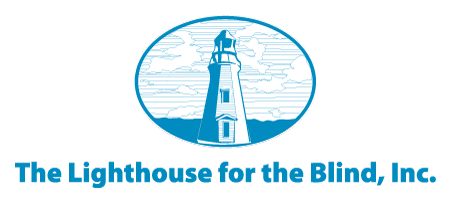
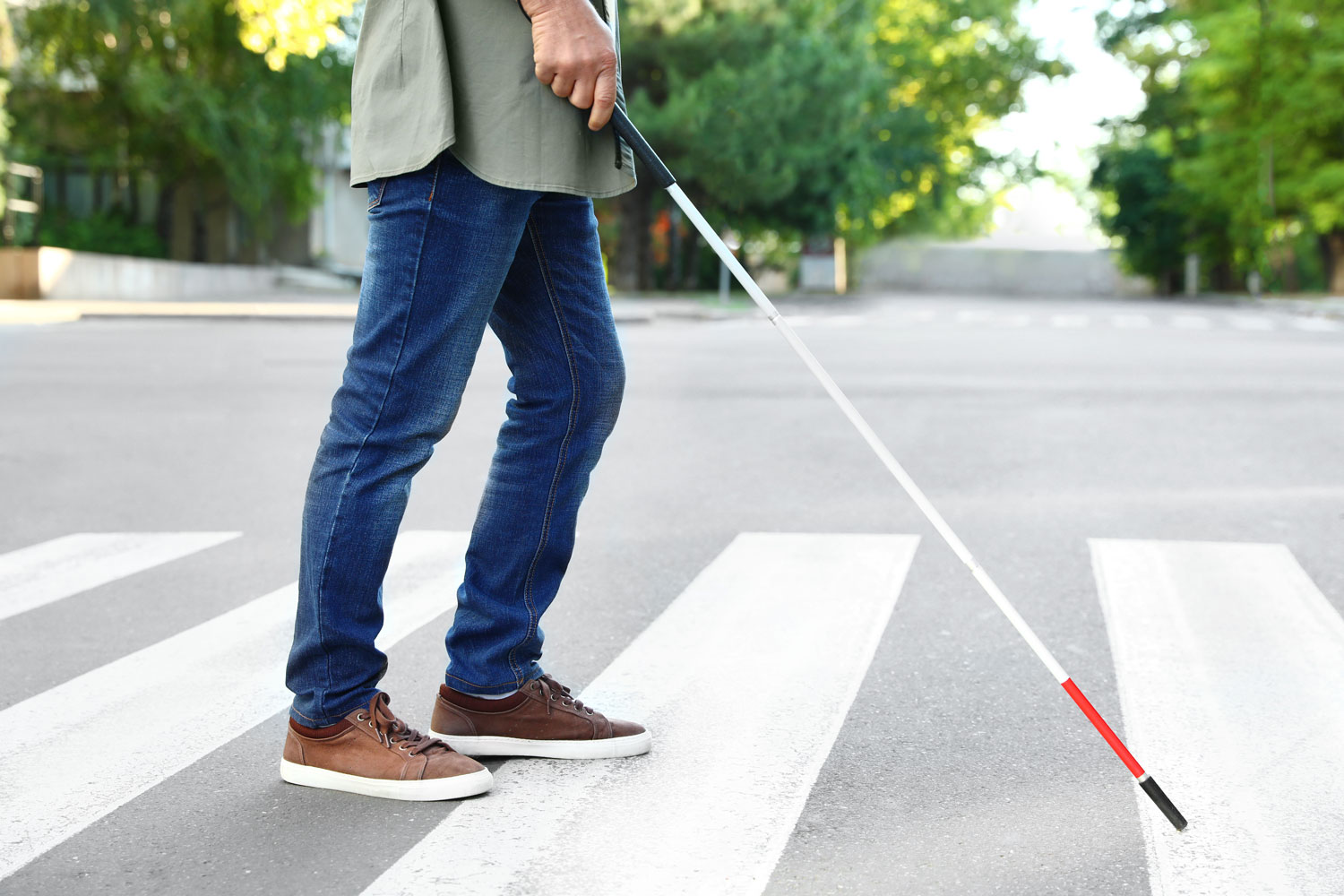
 Orientation and Mobility Specialist David Miller (third from left) with KPG Architects experience vision simulation goggles and practice using white canes before their guided walk.
Orientation and Mobility Specialist David Miller (third from left) with KPG Architects experience vision simulation goggles and practice using white canes before their guided walk.